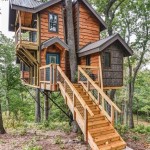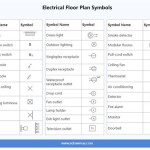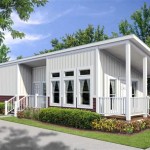Home Plans With Attached Greenhouses: A Blend of Beauty and Functionality
The concept of integrating a greenhouse into a home design has gained immense popularity. This innovative approach not only enhances the aesthetic appeal of a residence but also offers practical benefits for homeowners. Home plans with attached greenhouses provide a seamless transition between indoor and outdoor living, creating a unique and functional space for gardening, relaxation, and enjoying the beauty of nature. This article explores the key advantages and design considerations of incorporating a greenhouse into a home plan.
Key Advantages of Home Plans With Attached Greenhouses
Integrating a greenhouse into a home offers several advantages that contribute to a harmonious and functional living environment:
1. Extended Growing Season
Attached greenhouses function as natural extensions of the home, providing a controlled environment that protects plants from harsh weather conditions. This allows for an extended growing season, enabling homeowners to cultivate a wider variety of plants and enjoy fresh produce throughout the year. The ability to grow vegetables, herbs, and flowers year-round enhances the self-sufficiency and sustainability of a home.
2. Improved Energy Efficiency
A well-designed greenhouse can contribute to improved energy efficiency. The greenhouse's glass roof can trap sunlight, providing passive solar heating for the home during colder months. This can reduce reliance on conventional heating systems, leading to lower energy consumption and savings on utility bills. Additionally, the greenhouse can serve as a buffer zone, mitigating heat loss from the home during winter.
3. Enhanced Indoor-Outdoor Living
An attached greenhouse provides a seamless transition between indoor and outdoor spaces, creating a fluid connection with nature. The greenhouse can serve as a relaxing retreat, offering stunning views of the surrounding greenery and a tranquil environment to unwind. It can also be used for dining, entertaining guests, or simply enjoying the tranquility of nature.
Design Considerations for Attached Greenhouses
When designing a home plan with an attached greenhouse, several key considerations ensure optimal functionality and aesthetics:
1. Orientation and Sunlight Exposure
The greenhouse should be located on the south side of the house to maximize sunlight exposure. This allows for optimal plant growth and reduces the need for supplemental lighting. Proper orientation also ensures that the greenhouse benefits from passive solar heating during the winter.
2. Ventilation and Temperature Control
Adequate ventilation is crucial for maintaining optimal temperatures and humidity levels within the greenhouse. The greenhouse should have vents or windows that can be opened and closed to regulate airflow and prevent overheating. Implementing a climate control system, such as a thermostat or a fan, further enhances the ability to maintain desired conditions.
3. Structural Integration and Aesthetics
The greenhouse should seamlessly blend with the overall architectural style of the home. This involves using materials and design elements that complement the exterior facade. The greenhouse can be incorporated as an extension of the existing structure or designed as a separate entity that is visually connected to the main house.
4. Access and Functionality
A dedicated entrance between the house and the greenhouse facilitates easy access for tending to plants and bringing in produce. Consider incorporating sliding doors or a French door to provide a spacious opening. The greenhouse should also be equipped with adequate shelving, benches, and other furnishings to create a functional and organized space for gardening activities.
Types of Greenhouse Designs
There are various types of greenhouse designs to consider, each offering unique benefits and challenges:
1. Lean-to Greenhouse
This design is attached to the side of the house and typically features a sloped roof. It is a simple and cost-effective option, often used for smaller greenhouses, as it provides a relatively small growing space.
2. Gable Greenhouse
This design features a pitched roof that resembles a gable, creating more headroom and greater growing area. The gable roof also allows for better ventilation and sunlight penetration.
3. Curved Greenhouse
Curved greenhouses offer a unique aesthetic appeal and can be a striking addition to a home. The curved roof design maximizes sunlight exposure and creates a spacious growing environment. However, they can be more expensive to construct than other types.
Home plans with attached greenhouses offer an innovative and sustainable approach to living. They provide a unique combination of aesthetic appeal, practical benefits, and a connection with nature. By considering the key advantages and design considerations discussed in this article, homeowners can create a harmonious and functional living space that enhances their quality of life.

The Noble Home House Blueprints Small Plans Sims

Pin By Annie Gassmann On Home Ideas Country Style House Plans Farmhouse

Small Modern And Green House Plans By Mark Stewart

Home Plans With Attached Greenhouse Google Search Interesting Floor Plan For A Round House Dome

Home Plan 001 2024 Great House Design Plans Custom

Attached Greenhouse Design With Sustainable Indoor Planter Beds The Natural Home

House Plan 1 Bedrooms Bathrooms 90101 Drummond Plans

Build An Attached Solar Greenhouse Backwoods Home

Attached Greenhouse Pros And Cons

Craftsman Style With 3 Bed Bath 2 Car Garage House Plans New








